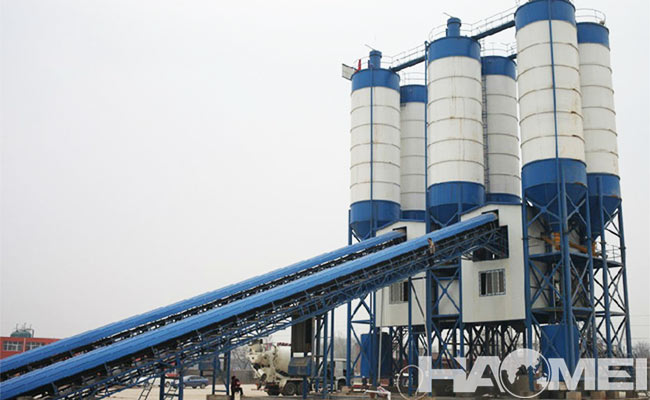
The hot sale cement batch plant must have high quality and can produce many types of concrete mix ratio. Because the loads on different parts of the concrete in general projects are different, some are large, some are small, and it is not possible to use concrete of one strength grade. For the parts under high pressure, high-strength grade concrete should be used, and for parts under low pressure, low-strength grade concrete should be used. Therefore, the concrete is divided into different strength grades to meet the needs of different projects, and selected through design calculations.

The material weighing system is a key component of cement batch plant that affects the quality of concrete and the cost of concrete production. It is mainly divided into three parts: aggregate weighing, powder weighing and liquid weighing. In general, the cement batching plant below 20 cubic meters per hour adopts the superposition weighing method, that is, the aggregate (sand, stone) is weighed with a scale, cement and fly ash are weighed with a scale, and water and liquid additives are weighed separately, and then put the liquid admixture into the water weighing bucket to pre-mix. In the concrete batching plant with more than 50 cubic meters per hour, the method of independent weighing of each material is mostly used, and all weighing is controlled by electronic scales and microcomputers. The weighing accuracy of aggregate is ±2%, and the weighing accuracy of cement, powder, water and admixtures all reach ±1%.
The water used in cement batch plant is also need to be noticed. Industrial wastewater containing fat, vegetable oil, sugar, acid, etc. cannot be used to mix concrete. Because these impurity-containing water will reduce the cohesive force of cement and reduce the strength of concrete, mineral water containing a large amount of salts cannot be used, making cement not well resistant to water erosion. For the chemical composition of mineral water, it must meet the indicators specified by the home, or make a comparison test with ordinary drinking water, and see if the strength is not reduced before it can be used.